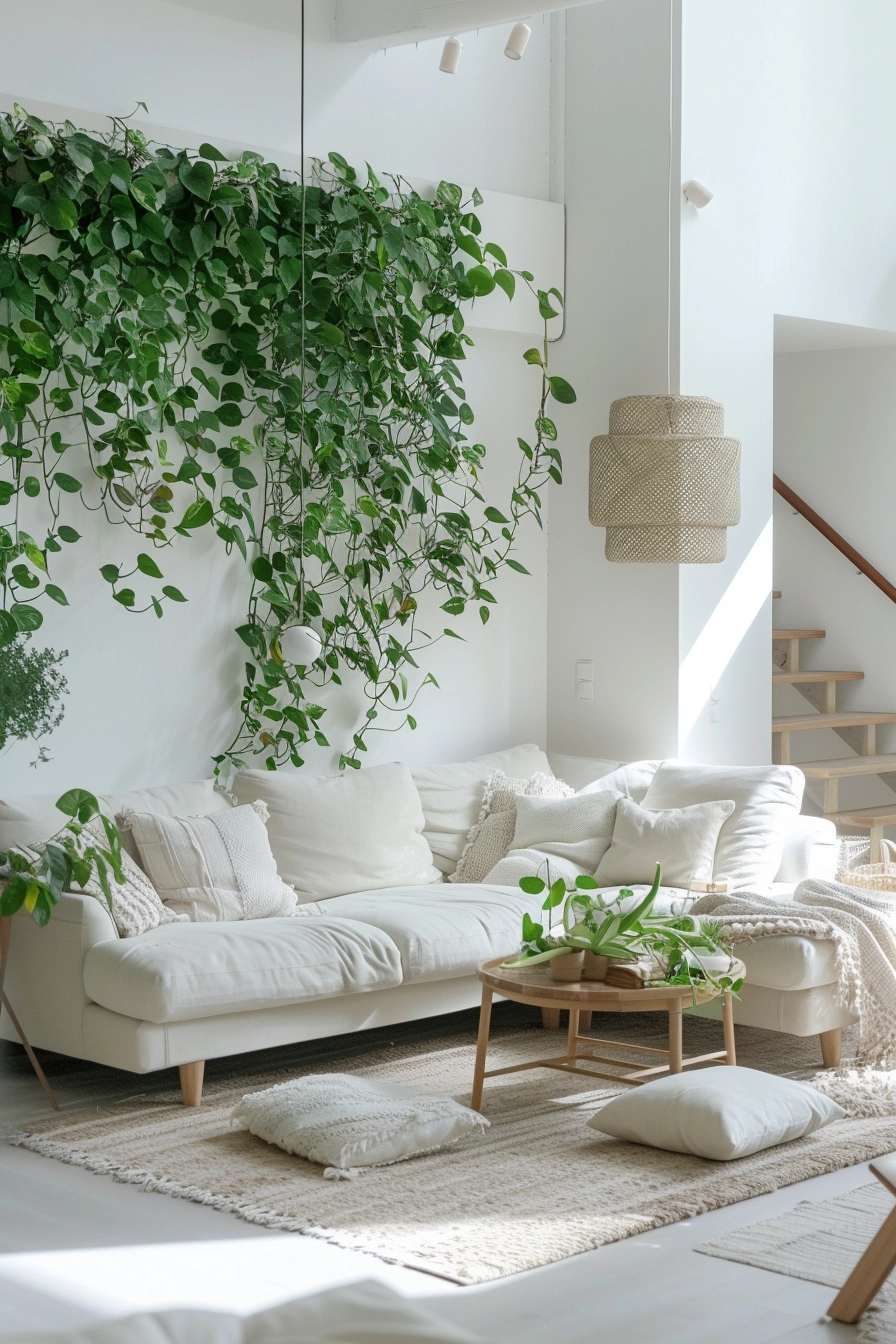Adding a living plant wall to your home can transform your space into a lush oasis. It not only adds a touch of natural beauty but also improves air quality and acoustics. Living walls, also known as green walls or vertical gardens, have become increasingly popular in both commercial and residential spaces. Creating a living plant wall can be done with smaller scale versions, and it requires considering the location requirements, display options, and plant selection.
Creating your own indoor plant wall allows you to bring the beauty of nature indoors and create a unique and refreshing atmosphere. It is a great DIY project that brings life and vibrancy to any room. With the right planning and steps, you can have your very own vertical plant wall that will be the envy of your friends and family.
So, if you’re ready to embark on this exciting project, let’s dive into the details of how to create a living plant wall inside your home.
Key Takeaways:
- Adding a living plant wall to your home improves air quality and creates a beautiful natural ambiance.
- Consider the location, display options, and plant selection when creating your indoor plant wall.
- Research and collect design ideas for inspiration before starting your project.
- Ensure your chosen location has access to natural or supplemental light.
- Select a suitable frame and choose plants with different colors, shapes, and sizes for visual interest.
Creating a Living Plant Wall Step by Step
Creating a vertical plant wall can be a rewarding and visually stunning addition to your indoor space. With a bit of planning and creativity, you can transform a plain wall into a lush botanical display. Follow these step-by-step instructions to create your own indoor plant wall.
- Gather Inspiration: Begin by gathering inspiration and exploring different ideas for your plant wall design. Look for inspiration online, in magazines, or visit botanical gardens for plant wall ideas that resonate with your style and preferences.
- Choose the Perfect Location: Determine the ideal location for your indoor plant wall. Consider factors such as available sunlight, humidity levels, and accessibility for maintenance. If your chosen spot lacks natural light, supplement it with indoor grow lights to provide the necessary light for plant growth.
- Measure and Mark: Measure the dimensions of the chosen wall space and mark it accordingly. This will help you determine the size and shape of the frame you’ll need to build for your plant wall.
- Select a Suitable Frame: Choose a frame that suits your design vision and the environment of your indoor space. Consider factors like water resistance and durability. You can opt for ready-made indoor plant wall planters or build a DIY frame using materials such as wood, metal, or plastic.
- Purchase the Perfect Plants: Select plants that are well-suited for vertical growth and thrive indoors. Consider their colors, shapes, and sizes to create an appealing visual arrangement. Choose a variety of plants to add interest and diversity to your plant wall.
- Set up Your Living Wall: Install the frame securely onto the wall according to the manufacturer’s instructions or your DIY design. Ensure that it is properly anchored and able to support the weight of the plants and the growing medium. Once the frame is in place, carefully plant your chosen plants, ensuring that their root systems are securely positioned in the growing medium.
- Maintain and Care: Establish a regular maintenance routine for your indoor plant wall. This may include watering, pruning, and fertilizing. Monitor the health of your plants regularly and make adjustments as needed to ensure their optimal growth and vitality.
By following these steps, you can create a stunning indoor plant wall that will bring the beauty of nature into your home. Whether you choose a minimalist design or a burst of vibrant foliage, a vertical plant wall is sure to be a captivating focal point in any room.

Note: Image is for illustrative purposes only and may not depict the exact design or plants mentioned in the article.
Benefits and Tips for Maintaining a Living Plant Wall
Creating a living plant wall can bring numerous benefits to your home’s interior. Not only does it provide a stunning decor element, but it also offers impressive air purification capabilities. The lush greenery of a living plant wall can transform any space into a tranquil oasis, enhancing the overall ambiance and improving the air quality.
One of the advantages of a living plant wall is its low maintenance requirements. Regular plant health checks are essential to ensure the well-being of your plants. This includes inspecting for pests, monitoring moisture levels, and assessing the overall health of your plant wall. Additionally, providing adequate lighting and proper drainage are crucial factors in maintaining a healthy and thriving indoor garden.
When it comes to fertilization, it’s important to understand the specific needs of the plants in your wall. Different plants may require different types of fertilizers or varying schedules. By researching and ensuring that your plants receive the right nutrients, you can promote their growth and longevity.
One innovative solution to enhance the maintenance of your indoor garden is incorporating a soil amendment like the FoodCycler. This convenient tool transforms food scraps into nutrient-rich compost that can be used to nourish your plants. By utilizing this sustainable practice, you can provide additional nutrients and promote the overall health of your living plant wall.
With proper maintenance and care, your living plant wall will continue to bring the beauty of nature into your home. By enjoying the benefits of improved air quality, a unique decor element, and the utilization of limited outdoor space, you can create a space that promotes wellbeing and a positive connection with plants.

